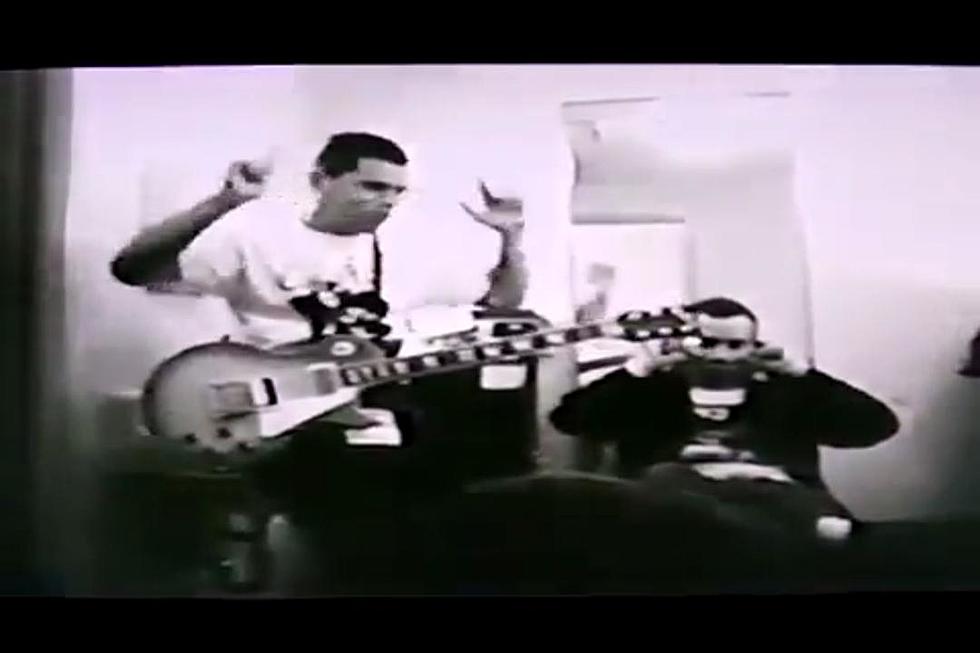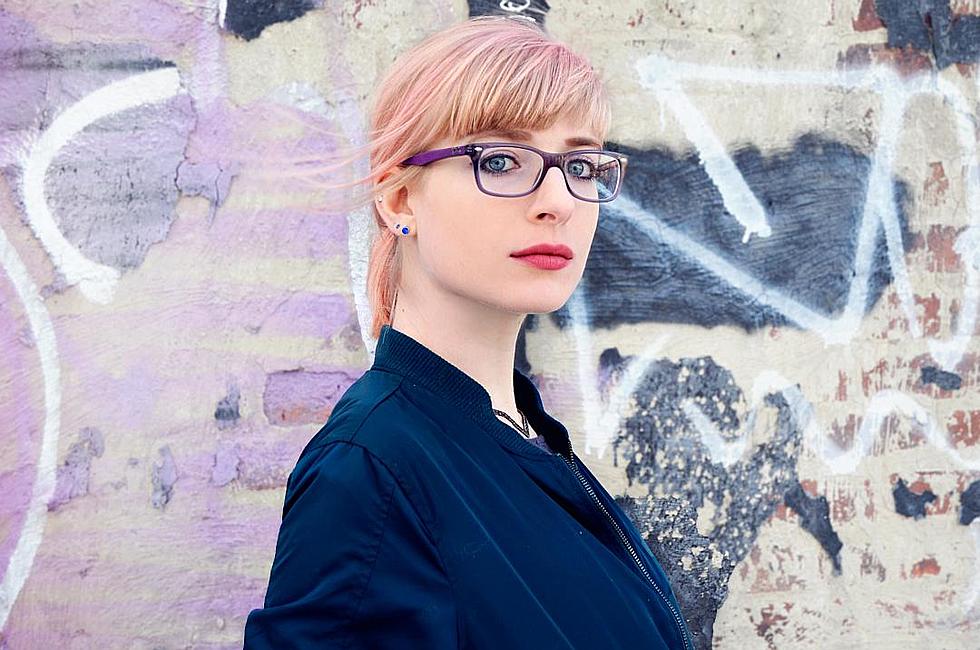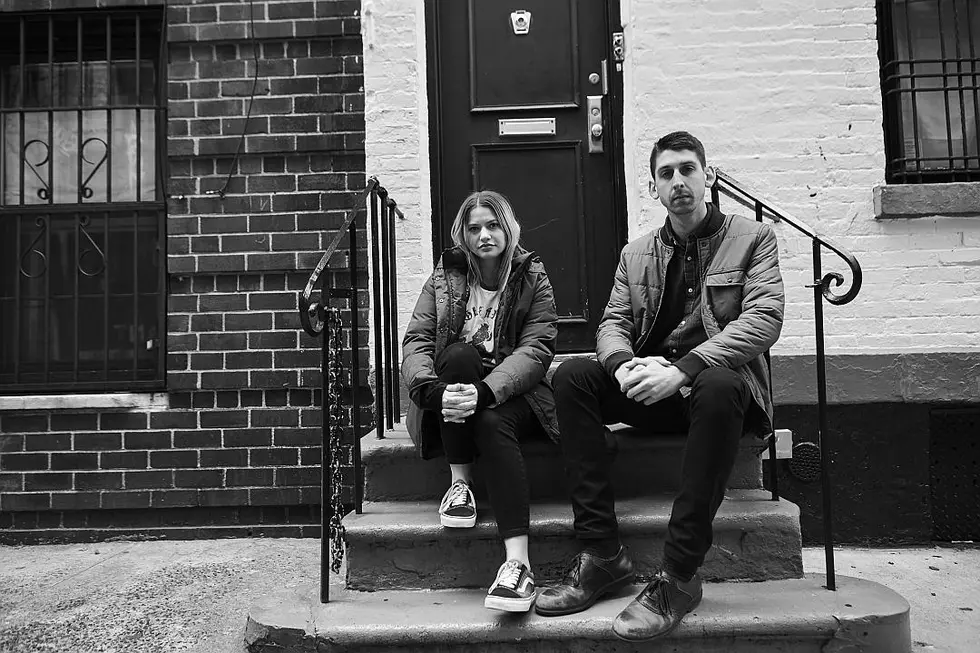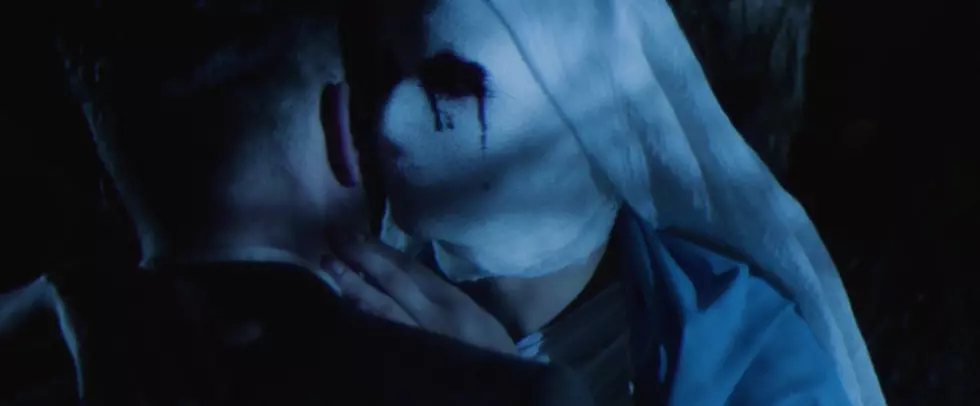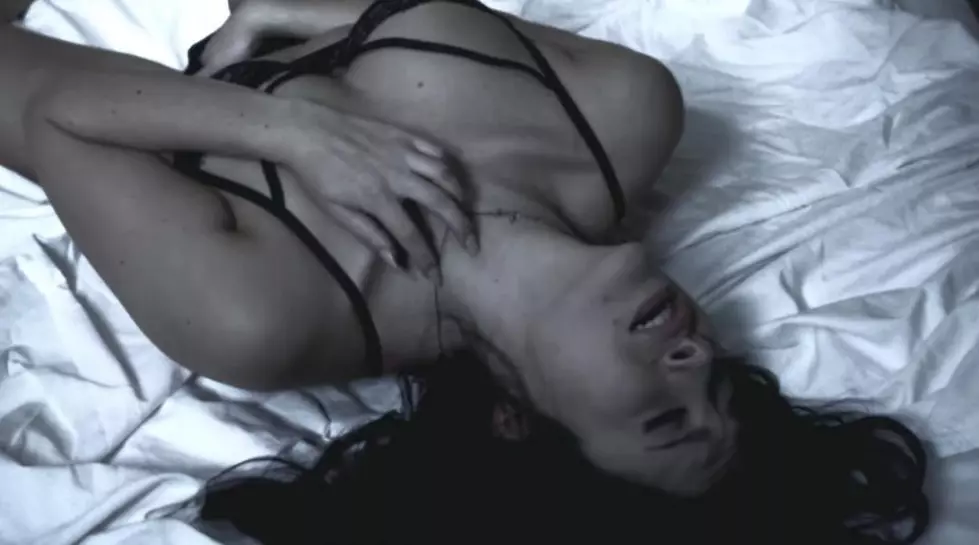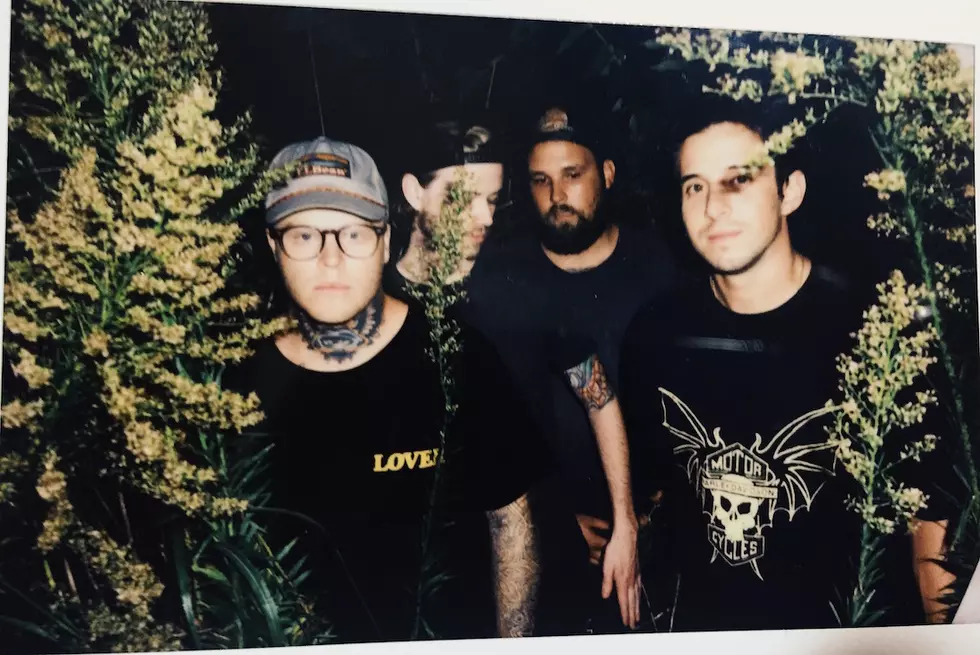
Racist Skins Weren’t Welcome in Warzone’s LES War Zone
The late '80s era of New York hardcore punk holds a clutch of records that define the sound and vibe of the city’s scene at the time. One of those many is Don’t Forget the Struggle, Don’t Forget the Streets, the debut LP from the Lower East Side skinhead contingent known as Warzone (order the repress via Revelation).
Originally known as Rat Poison and formed in the early quake of downtown hardcore, Warzone were a band in a constant state of flux, yet always commandeered by their charismatic drummer-cum-vocalist, Ray “Raybeez” Barbieri. Initially released in 1987 on the short-lived Fist label (before being reissued a year later by Caroline), Don’t Forget the Struggle, Don’t Forget the Streets caught the band in its usual state of upheaval after longtime guitarist / songwriter Todd Youth quit before the recording to join another legendary New York hardcore band, Murphy’s Law.
But even with a quickly assembled lineup consisting of members of Gorilla Biscuits and Altercation, as well as newcomer John “Omen” Ullman on bass, the album is considered a classic that impeccably captures the spirit and intent of the band: to dish out hardcore that was raw and purely from the streets of New York.
After being out of press for almost 30 years, Don’t Forget the Struggle, Don’t Forget the Streets is finally finding its way back to vinyl courtesy of Revelation, which recently started taking pre-orders for the album. To celebrate this occasion, we sat down with Warzone’s bass player at the time — the aforementioned Ullman — to talk about his introduction into both the New York hardcore punk scene and Warzone, as well as the recording of the album and how he left the band.
What was your introduction to the New York hardcore punk scene?
I was fortunate to have met David Decuzzi at Bayside High School in Queens in 1982. He was the first drummer of the Cavity Creeps, and was tight with the bands the Mob and Urban Waste. He was part of a small group of hardcore kids at the school that included Kim, who was going to the CB’s shows, and Lorain, who was dating Dito Montiel of Major Conflict. Decuzzi and I started hanging all the time, going to all sorts of shows, and [were] introduced to the guys in Reagan Youth and the characters on the scene within weeks.
But before all this, I was going out to punk shows and gallery openings down in the East Village. The girl who lived next door to me, Snezana, who was like 17 when I was 12 or 13, introduced me to punk. My first shows were the Cramps and bands like the Senders, who she knew personally. She also introduced me to artists she knew, like Keith Haring and Basquiat, and other worthy but unknown artists. So, I was already punk when I arrived at Bayside High, and immediately joined with Decuzzi and the girls, and naturally switched it up to hardcore.
Alphabet City back in the early '80s, as you know very well, was dystopian, with its half-demolished buildings, drugs and prostitutes, punks, graffiti and drag queens. Raybeez stood out in the scene when I met him, which was at a hardcore matinee at CB's; it might have been an Agnostic Front show. I experienced Ray on drums with Agnostic Front, and with John Watson on vocals.
The second time I met Ray — and this was like '82 — was when I was leaving the R train station at 8th Street, when he sneaked up on me and jumped on my back as if he was still in the mosh pit. I thought I was being attacked by a monster. Then I realized it was that crazy skinhead from Agnostic Front.
Back in the day, despite NYC's urban blight, there was a kind of freedom. It was a time of possibility. Truly, hardcore was birthed in the Mad Max-like setting. Without this gritty Lower East Side and East Village, lots of music and art, of course, would have never seen the light of day. And this is why New York has a big place in my heart, and I would squeeze and kiss it if that was possible! New York is always home base, and my first love.
Talk about Raybeez and the presence he had on the New York hardcore scene at the time.
Firstly, I feel that New York hardcore was about being under 18, and living freestyle. Ray was fun, and we all just went mad together. All right, here’s a story: The Warzone crew was friends with these girls from SoHo, and they were actually from wealthy families. One girl’s mother was a real estate agent, and this girl took the keys to one of the Upper East Side mansions her mother was showing at the time. So, a whole crew of kids wound up taking over this mansion that had roof terraces, one with a Jacuzzi. It had an indoor swimming pool, sauna, billiards room — a whole townhouse. We were drinking and smoking pot and skinny-dipping, ordering pizza — living there. See, I wish I was taking photos of all this saucy mischief.
Ray was known as a nice guy. Ray got respect because he first respected the artists and drag queens at the Pyramid Club and [the]punks that made the Avenue A / East Village scene what it was.
Were you aware of Warzone prior to joining the band?
Around 1985, I was no longer going to CB’s matinees every week, but was still hanging out at night on Avenue A. I got word about people forming bands. Ray was a popular character down on Avenue A. I knew Tito [Sebastian Perez] and Todd ["Youth" Schofield] and Raybeez, but I never saw Warzone live prior to joining — and never heard a Warzone song until our first rehearsal.
So, how did you end up being in Warzone?
Although I was driving around at night smoking herb with Todd Youth and Jack Flanagan of the Mob — who became Murphy’s Law's manager — I did not realize that Ray was asking kids on the scene to step in and temporarily join Warzone. But Jack told Ray in the summer of 1987 to ask me if I wanted to join as bass player. Ray asked me to join because Arthur [Smilios] of Gorilla Biscuits apparently couldn’t commit and Warzone was opening for the Bad Brains at the Ritz. Knowing that the Brains were a big deal with me, I said I would join on the spot. But I liked Ray and was down to help him with Warzone. Later on, I saw that he was really trying to hold the band together after Todd’s departure to go on tour with Murphy’s Law.
Later on, some folks were telling me, “That’s not Warzone, that’s No-Zone." I saw how Ray got a pie in the face when Todd joined Murphy’s Law, so I said to myself, “OK, let’s make Warzone rock solid. Let’s get this band going.”
The skinhead thing was pretty huge in New York at the time. Did you identify as a skinhead back then?
Skinhead style was, in a way, a way to identify the Lower East Side crew. At this time, in parts of America — and, of course, in England — skinhead was the opposite of what we stood for: They were essentially just kids filled with intolerance, just fucked in the head. What a sad, terrible waste of human life, walking and talking all filled with hate, truly. I like the way David Lynch puts it: He says anger is like wearing a rubber clown mask. When you finally remove the mask, you realize how all that anger was suffocating you, and you’re free, and you won’t know that freedom until you get there, actually destroy the anger from your thoughts. The New York hardcore kids — like Raybeez and Ray Capo, John Bloodclot, and lots of kids — were open-minded and skinhead.
The skinhead scene became a mixed bag of folks. The people who were down with Warzone were not the racists. There were a couple idiotic skins who had me on a list of people who were Jewish, but they concluded I was OK because I was adopted and — in fact, they concluded — had Aryan features. I told the person who told me this junk that if they want to come to my place, I will kick their racist asses. What a joke — a list of Jewish people. Apparently some sick intentions swirling around in their minds. Even being considered is an offense.
Anyway, for the Warzone skins, in our world, this was not something out of the movie Romper Stomper. This was a New York vibe, and I’m a New York Jew, and Jay was half Jewish, and Ray and our friends were more open and cosmopolitan, meaning we mixed with the rich folks and chilled at their SoHo lofts, and were with the poor, right there for them, sometimes helping out or protecting them. We also listened to lots of reggae music and smoked big ganja spliffs, like the original non-racist English skins. Around '88, we knew we must draw the line, because this racist label was being pinned on us for being skinheads. In any event, listening to reggae, and being in New York, where we have a mosaic of cultures, set New York apart from other scenes developing in other states, where the hardcore kids were more hillbilly-esque. At bottom, New York skins were an incarnation of skinhead, in my view.
When Don’t Forget the Struggle, Don’t Forget the Streets was reissued in '88 by Caroline, did the band get any flak from people in the hardcore scene?
Ray felt good about signing with Caroline. I felt good that Keith Wood, the CEO of Caroline, was respecting us, and happy that we signed on. We were absolutely street brats, and it felt nice to be given a chance on an established record label. It didn’t feel like selling out, because the folks at Caroline were modest; they didn’t come off like scamming entertainment business types. Life isn’t so black and white. We needed a vehicle to further our efforts, not to live like rock stars. Importantly, we believed the arrangement was mutually positive, and so, if there was any flak by a few disgruntled fans who didn’t know the details of our relationship with Caroline, that would be natural. When you have aims, and are onto something, other people naturally become obstacles and try — knowingly or subconsciously — to be spoilers. Warzone was gaining ground as a band that represented not selling out.
What was going on in between the release of Don’t Forget the Struggle, Don’t Forget the Streets and Warzone’s second LP, Open Your Eyes?
Our family of friends was growing. Lots of parties and lots of girlfriends. We were the new breed of rock star from the streets with no cash on hand and stealing beer from bodegas.
I always thought Open Your Eyes was a great record; I almost like it more than Don’t Forget the Struggle, Don’t Forget the Streets. Can you give up any background info on that album?
Warzone recorded Open Your Eyes with E.K replacing our Lukie Luke on drums, and with Dr. Know of the mighty Bad Brains producing. Jerry Williams, a.k.a. Jay Dublee, the legendary sound man for the Brains, engineered the album. Dublee recorded the 1982 Bad Brain’s ROIR cassette, which is widely thought of as the greatest punk/hardcore recording of all time. May he rest in peace. Dublee’s younger brother co-engineered, so that’s very special. Having Dublee helping us out was our great fortune, and we all miss him.
Warzone came from the old school, and we never sold out on the original hardcore music; that is until I left and the third album emerged. So, with Doc and Dublee behind the boards, Open Your Eyes was going to be true to the roots of the this skinhead, hardcore, Minor Threat-influenced music. We were working with the truest of the true. Doc, bless him, accepted our invitation to produce, and the whole thing fell into place.
We recorded at Kampo Cultural Center, which was where my best friend Decuzzi worked. I’m proud to take credit for arranging the recording scenario at Kampo.
There are some funny, or behind-the-scenes stories about the recording. There was the time when Paul [Canade] and I argued about the guitars sounding too loud. Raybeez got involved and, in an emotional outburst, waved his arms up in the air, and in doing so, smashed the glass in a painting that was above him. Glass shattered all over the room; he ended up with some of it stuck in his head. I still retain that the bass was too low on most tracks.
Why did you eventually leave Warzone?
Tour frustrations. We were in the middle of America, on a tour with no cash on hand. For example, one night we found ourselves crawling around a McDonald’s dumpster for discarded food, because we had no money.
By the time we hit Nebraska, I was totally frustrated with the people on this tour. I lost it. Ray Lugo, the tour manager, and I were going to kill each other. I punched him right on the nose, and we duked it out for a long time. He was a better fighter than I was in the end, and I was a mess. And so, this was a bit like Romper Stomper! I called my girlfriend, and she arranged a flight from Nebraska to New York. Jay Skin played bass for the rest of what we called the American Invasion tour. Ironically, Lugo and I formed the band Twin Barrels Burning together after that tour. Lugo was one of my best friends before and after this madcap tour, and always a friend for life.
What do you think is the legacy that Warzone left behind? Why do people continue to return to the music?
We were a band in the golden years of hardcore. Ray was beloved by many on the scene, and we had the right people around us; they made the band exciting. And, of course, we had the best logo.
We also, I think, came across as the real deal. The photos and videos that survived provide a snapshot of the life we lived, which was hardcore street. You needed to be there down on Avenue A to know it. Lots of new hardcore bands are influenced by early hardcore bands, and they look to Warzone.
The Revelation re-release is in honor of all those who helped build up the Warzone family, and our Ray, who we all miss a lot.
More From CLRVYNT
